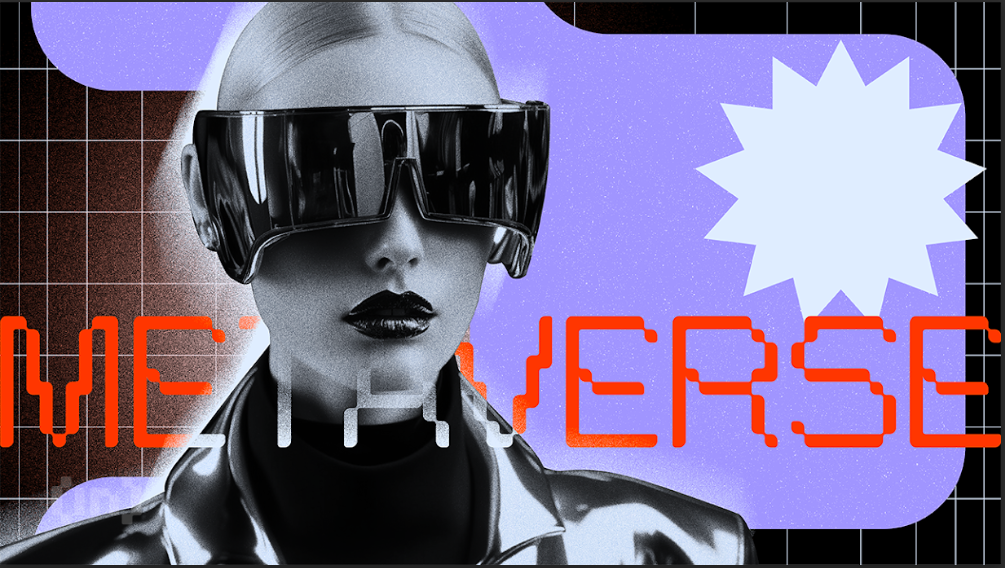The metaverse refers to a virtual universe where people can interact with each other and experience a range of digital environments. In recent years, with the rise of blockchain technology and advancements in AR/VR, the idea of a metaverse has started to become a reality. Many companies are working to create a seamless and immersive virtual experience for users. One of the challenges in the metaverse is the need for open protocols.
Like HTTP or TCP/IP on the internet, these protocols ensure that different virtual worlds and platforms can communicate. Without open protocols, each metaverse platform would function as an isolated ecosystem, unable to transfer digital assets or identity from one platform to another. This article will explore open protocols in detail, the benefits, the risks of closed protocols, and the critical role of metaverse builders.
BeInCrypto Trading Community in Telegram: read reviews on the best projects with open & closed protocols, get technical analysis on coins & answers to all your questions from PRO traders & experts!
What are open protocols?
Open protocols are the rules and standards that let different devices, applications, and platforms communicate without restrictions or limitations. They are usually openly accessible, publicly available, and can be used without restrictions or licensing fees. Open protocols foster collaboration and innovation, promote transparency and ensure platform interoperability.
In contrast, closed protocols are proprietary standards owned and controlled by a single entity. Typically they only work with specific devices or applications. This makes it difficult for other platforms to communicate with them. Additionally, they can be expensive, and users may be required to pay licensing fees to access them.
So, the key differences between open and closed protocols are accessibility and transparency.
Advantages of open protocols

The importance of open protocols in the metaverse can be compared to the importance of the internet protocol (IP) in developing the internet. Just as IP allowed different networks to communicate and enabled the growth of the internet, open protocols in the metaverse will play a similar role, promoting interoperability between virtual platforms. This will allow users to seamlessly transfer their digital assets, such as virtual real estate, collectibles, and currency.
Open protocols have many advantages over closed protocols in the metaverse. They promote innovation and collaboration enabling developers to create new applications and features without restrictions or limitations. Open protocols allow for decentralized development, enabling anyone to contribute to the growth of the metaverse in a coordinated way without the limitations of closed protocols.
Open protocols foster innovation by promoting experimentation and creativity. They enable developers and creators from various backgrounds to contribute and collaborate in open, interactive communities. This leads to a more diverse and vibrant ecosystem, creating a more inclusive metaverse reflecting our real-life values.
Moreover, open protocols promote transparency for users and developers. Open documentation portals allow developers to quickly understand the basic concepts and start contributing to the protocol. On the user side, enabling people to understand how the metaverse operates and how their data is used feels empowering. This is also likely to drive long-term adoption.
Sponsored SponsoredOpen protocol and interoperability
Crucially, open protocols ensure interoperability, allowing users to move their identity, achievements, and digital assets between different virtual worlds seamlessly.
This is essential for users who want to access different services or interact with people on other platforms. Moreover, many users simply value the freedom of choice and the ability to engage with their friends on any platform. With open protocols, users can usually move between platforms without additional logins or sign-ups. This makes it easier to access the metaverse and for users to participate in various virtual activities such as shopping, playing, learning, or working.
Finally, open protocols reduce centralization and promote a more balanced distribution of power. Centralization usually creates some efficiencies. However, it can also lead to power imbalances, with a few entities controlling most of the data and transactions. Decentralization, on the other hand, gives users more control over their digital assets and interactions in the metaverse. So, decentralization distributes power and authority more fairly, creating a more equitable and inclusive metaverse for all users.
The risks of closed protocols
Closed protocols are often associated with proprietary software or technologies controlled by a small group or a single entity. In the context of the metaverse, they can pose significant risks that can hamper growth and development.
Closed protocols can hinder innovation and collaboration, promote opacity, limit interoperability, and maintain excessive centralization.
SponsoredTypically developed and controlled by a single entity, closed protocols receive limited input from outside stakeholders. The resulting lack of conceptual diversity and a gathering of similar perspectives and experiences can stifle innovation.
Moreover, closed protocols can discourage collaboration by requiring strict adherence to specific technical standards or frameworks. This can make it challenging for developers, content creators, and other stakeholders to work together effectively, leading to slower development cycles and potentially suboptimal user experiences.
Another significant risk associated with closed protocols in the metaverse is their potential to promote opacity. Closed protocols often aim to protect intellectual property and other proprietary information, which could limit transparency and accountability.
Closed protocols can also hinder interoperability by using proprietary standards or frameworks. This can make it challenging for different entities to communicate and collaborate effectively and make it impossible for users to transfer their identities and assets to other platforms. Ultimately, this can lead to fragmented virtual islands, not the integrated and connected metaverse we all envision.
Examples of open protocol collaboration
Various organizations, businesses, and influential individuals would need to interact and collaborate to drive the adoption of open protocols. For example, Open Metaverse Interoperability (OMI) Group bolsters the metaverse as an open and interoperable resource. This group of passionate enthusiasts, industry professionals, and independent creators believes that community collaboration, openness, and transparency are the key pillars of an inclusive metaverse.
Additionally, The Interledger Protocol (ILP) is an open protocol connecting different payment systems, which could be essential to enable cross-platform transactions in the metaverse. The Decentralized Identity Foundation (DIF) is a non-profit organization aiming to create open standards for decentralized identity systems to enable users to travel between virtual worlds while retaining their identity and assets.
Examples of open protocols used in the metaverse include VRML or Matera. VRML (Virtual Reality Modeling Language) is an open standard for creating and sharing 3D virtual environments and objects. Matera, meanwhile, is an emerging open protocol built by Landvault that tokenizes metaverse experiences, puts them on chain, and enables human and economic coordination. People and organizations can co-create and venture effortlessly across platforms.
The role of metaverse builders

Metaverse experience builders play a crucial role in promoting adoption. By working with developers and designers to create virtual experiences that utilize open protocols, builders contribute to developing an interoperable and secure metaverse.
By assisting brands, organizations, and celebrities in entering the metaverse, experience builders enable participation in this new phase of the internet to reach and engage with a broader audience. Ideally, the goals should go beyond the bottom line and focus on accelerating the metaverse economy through technology to promote fairer wealth distribution across the web.
Open protocols are crucial for developing the metaverse
In conclusion, open protocols are crucial for developing the metaverse and play a key role in ensuring a seamless and secure virtual experience for users. The metaverse can potentially revolutionize how we live, work, and interact with each other. Independent organizations, committed individuals, and open protocols must work together to create an interoperable and inclusive Metaverse.

